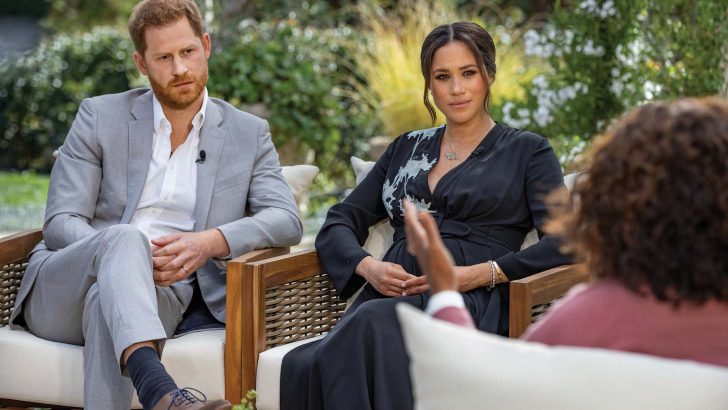According to some royal sources, the root of Prince Harry’s bitter feelings towards his family lie in a very old, even biblical, scenario: that is, when brothers fall out because one feels the other is favoured over the other. That was the basis of the Hebrew Bible’s first account of homicide: when Cain slew Abel, (told in Genesis 4:1-16.)
It is said that Prince Harry strongly resents some of the words spoken to him (especially about his wife, Meghan) by his elder brother, William, and feels disparaged, too, by his position in the family – behind William in order of precedence. William is due to be the monarch one day: Harry, sixth in line, is unlikely to be. He has also indicated that his brother William, along with Kate Middleton, were jealous of Meghan’s successful way of connecting with people on royal tours.
Rivalry
Psychoanalysts often focus on the Cain and Abel story as the classic example of rivalry and jealousy between brothers. In Genesis, Cain was the elder and Abel the younger: yet Cain was jealous that God found greater favour with his younger brother. As we know, when the Almighty asked Cain about Abel’s disappearance, the offender answered: “Am I my brother’s keeper?”
The issue of sibling jealousy occurs at several points in the Old Testament – notably that of Joseph and his brothers. Joseph’s jealous brethren plotted to kill him – stripping him of the special coat his father had made for him and chucking him into a pit.
And so, this story of brothers at war, or at loggerheads, has been repeated down the ages, in families, in history, in novels, in legends. William and Harry’s apparent rivalry would be par for the course.
Brothers
And yet we also have vivid examples of brothers who worked together in harmony. Literary brothers like Wilhelm and Jacob Grimm, or Edmond and Jules de Goncourt, produced their classics in unison. Orville and Wilbur Wright were inseparable as aviation pioneers: Vincent van Gogh was supported throughout his short life by his brother Theo.
The poet and writer Patrick Kavanagh was loyally supported all his life, and after it, by his brother Peter. Patrick Pearse and his brother Willie were so close that Willie was executed just for being Patrick’s brother.
So, although we’ve seen brothers fall out – many of us could find examples in our own families – it isn’t always so. If brothers share a common aim and if other family members are supportive – particularly wives – brothers can be the best of friends.
And the same principle goes for sisters. They can be loving and close – like the Brontes – or lifelong feuding rivals, like the film stars Olivia de Havilland and Joan Fontaine, who never patched up their sibling enmity.
Whether Harry’s well-aired hostile feelings towards his family, including his father, will heal the difference with his brother – or amplify it – remains to be seen. It is certainly a situation with a long back story, and an old, biblical warning.
***
Incidentally, the tabloids weren’t always nasty about Harry’s mother, Diana, Princess of Wales, as he alleges. I was writing for The Daily Mail during Diana’s prime and she seemed to approve of my despatches. She actually asked the editor of The Daily Telegraph “Why can’t you write nicely about me, like Mary Kenny in the Mail?”
And yet, I think the truth is that Diana had an ambiguous relationship with the media. In one way, she courted it, in another, she felt herself persecuted. But accumulated pressure on her was indeed colossal.
St Peter in paintings
For mid-March, our main Lenten saint must be St Patrick: but as my focus here is on remarkable paintings of saints, I’ve chosen the first Pope, St Peter. Peter has inspired many great artists, including Raphael’s Peter Appearing to the Apostles (in London’s Victoria and Albert Museum), Da Vinci in The Last Supper, Georges de la Tour’s warmly-lit Tears of St Peter, at the Cleveland Museum, and Masaccio’s St Peter Healing the Sick, in Florence.
Rembrandt painted three stunning pictures of Peter: one is the reflective St Peter in Prison, hanging in Jerusalem: another is the dramatic Denial of Christ by St Peter, in Amsterdam’s Rijksmuseum.
I was fortunate enough to see the original of Rembrandt’s tender St Peter, as a self-portrait, in the national museum in Stockholm. It is the most haunting picture of Peter as an old man, with all the wisdom and experience of his extraordinary life expressed in his face. A great, holy, picture.
PS: On St Patrick, the excellent Central Catholic Library in Dublin will be holding a virtual seminar at 7.30pm on Monday March 15 on ‘St Patrick – The Man and His Mission’, given by Dr Paul Byrne. Applications for attendance by Zoom from Edel Purcell on: edelpurcell@gmail.com


 Mary Kenny
Mary Kenny Britain’s Prince Harry and Meghan, Duchess of Sussex, are shown with Oprah Winfrey in the March 7 interview. Photo: Harpo Productions
Britain’s Prince Harry and Meghan, Duchess of Sussex, are shown with Oprah Winfrey in the March 7 interview. Photo: Harpo Productions 